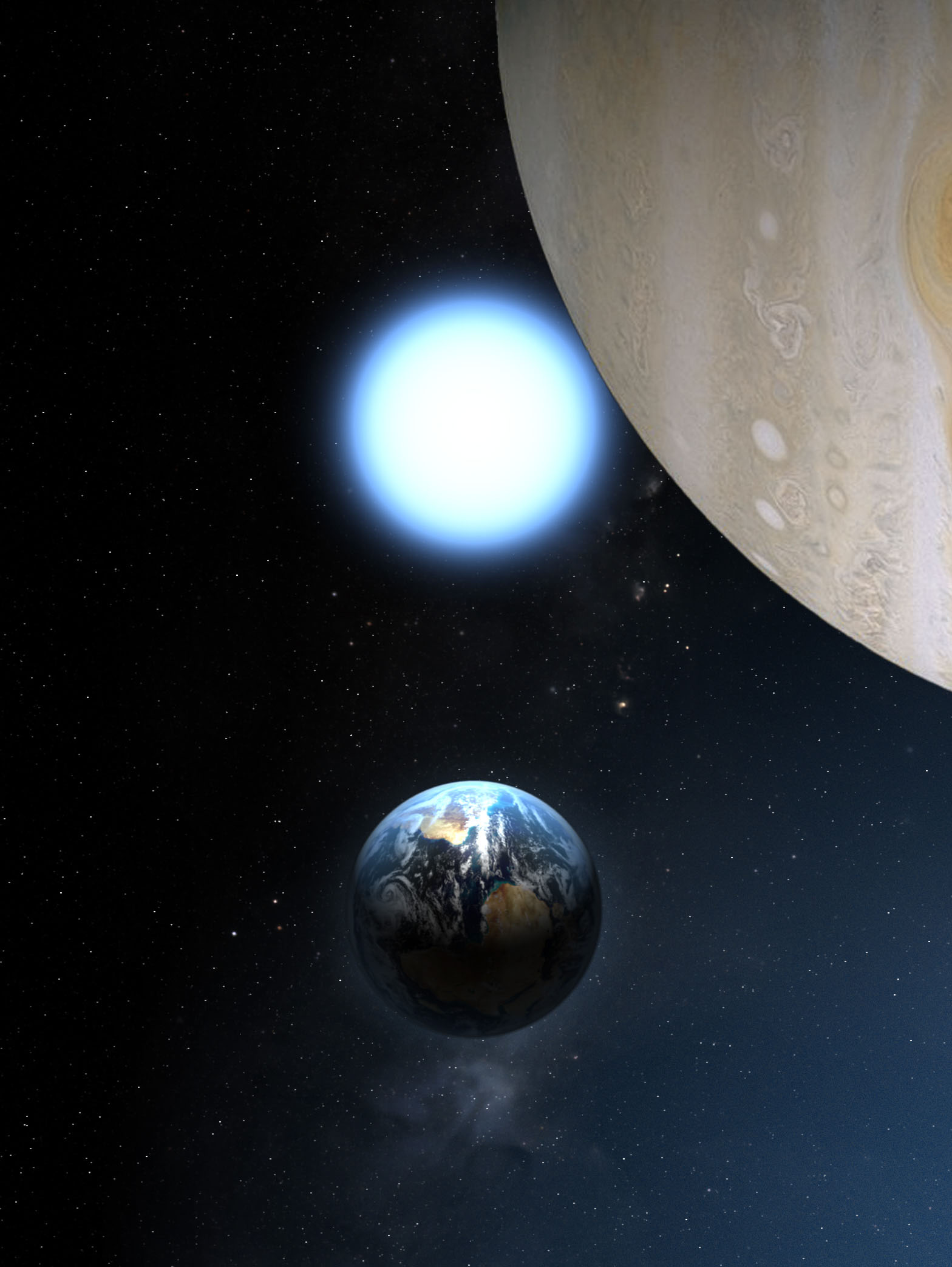The giant and the dwarf
Size alone is not always the most important factor. Sometimes, large things also orbit small things – because the details of a system matter. Astronomers have now found a real example for this situation in space, about 80 light-years from us, using the TESS telescope.
The discovery published in Nature shows the likely presence of a planet the size of Jupiter orbiting the white dwarf, WD 1856+534, once every 34 hours.
“This planet is roughly the size of Jupiter, but it also has a very short orbital period – one year on this planet is only 1.4 days long, so short that the planet is practically being whipped around its white dwarf star,” says Ian Crossfield, an assistant professor for physics and astronomy at the University of Kansas and a co-author of the article.
A white dwarf is the remnant of a star like our Sun, which expanded to form a red giant and then collapsed again to form a dense, weakly luminous core. White dwarfs have about the circumference of the Earth. The planet named WD 1856 b is thus much larger than what’s left of its star. During this process, a star will normally devour planets in its orbit – but that wasn’t the case for WD 1856 b, which somehow seems to have avoided destruction.
“This tells us that white dwarfs can have planets, which we didn’t know before,” says Crossfield. “There are researchers right now who are searching for transiting planets that could be potentially habitable around white dwarfs. It’d be a rather strange system and you’d have to think about how the planets actually survived all this time. But the universe is big. Now we know at least some kinds of planets survive, so there will be more support and greater interest in searching for even smaller planets around these white dwarfs.”
Astronomers first found hints of the planet when they discovered a possible transiting object in NASA’s TESS space telescope survey. TESS finds planets by looking at a star and measuring how its brightness changes. To confirm whether WD 1856 b was actually a planet orbiting the white dwarf, Crossfield analyzed the object’s infrared emissions using NASA’s since decommissioned Spitzer space telescope.
“For this white dwarf object, it’s difficult to measure its mass – we knew how big it was, but not how heavy,” explains Crossfield. “This new object could’ve been a small star or a large planet. We could tell the difference by asking the question: is this thing also emitting infrared light? If it’s a star, it’d be hotter than a planet and should be glowing in the infrared. Our Spitzer data showed that the object is basically emitting no infrared radiation at all.”
WD 1856 b is located about 80 light-years away in the constellation Draco. The team behind the paper assumes that the gas giant was pulled in by the white dwarf’s gravity long after the star had shrunk from its red-giant phase – otherwise the planet would’ve been obliterated on its current orbit. On the question of whether the discovery of the first planet orbiting a white dwarf means that the Earth might have a chance of surviving our Sun’s red-giant phase in the far distant future, Crossfield explains that this is still unlikely.
